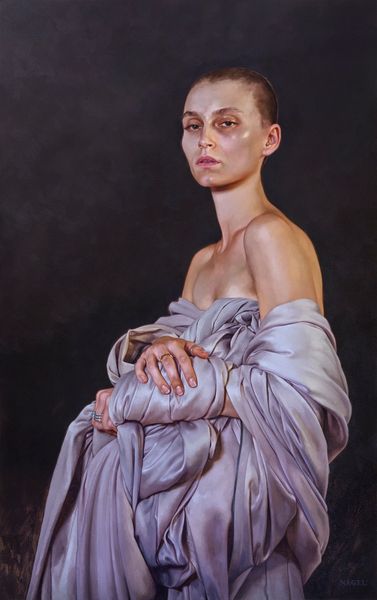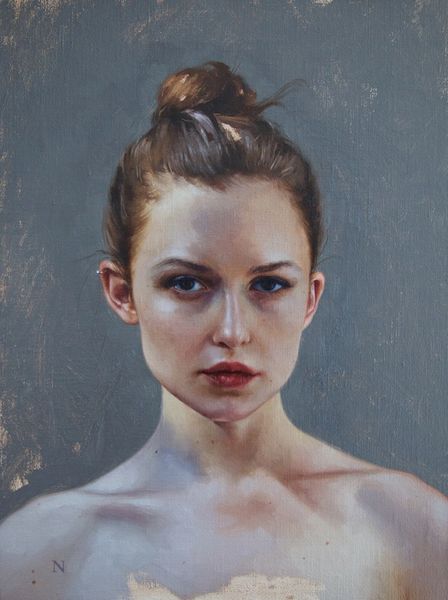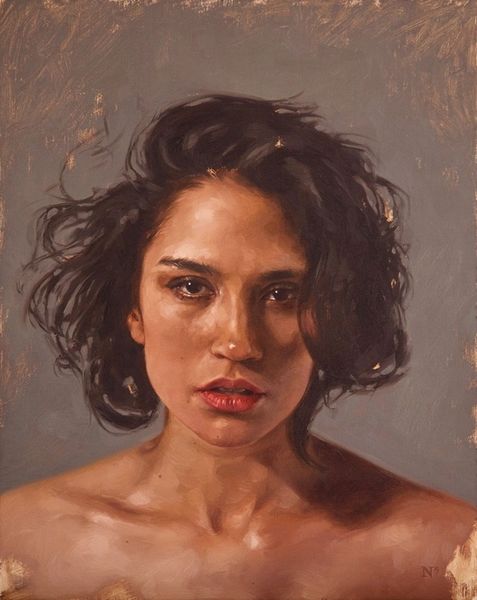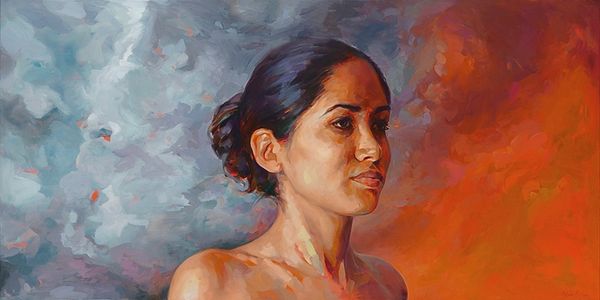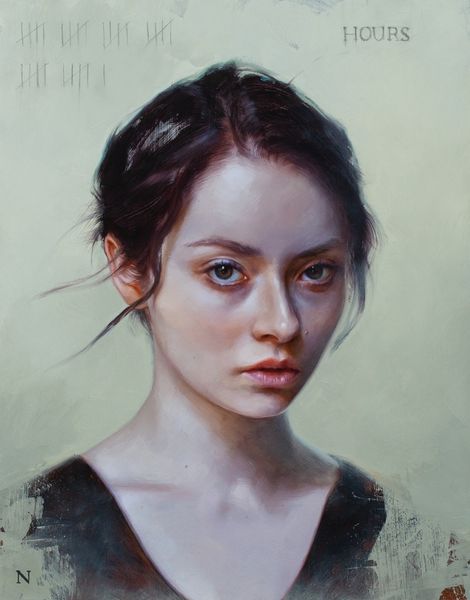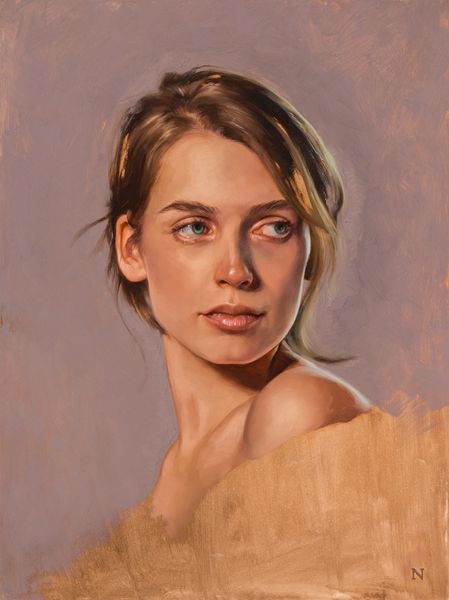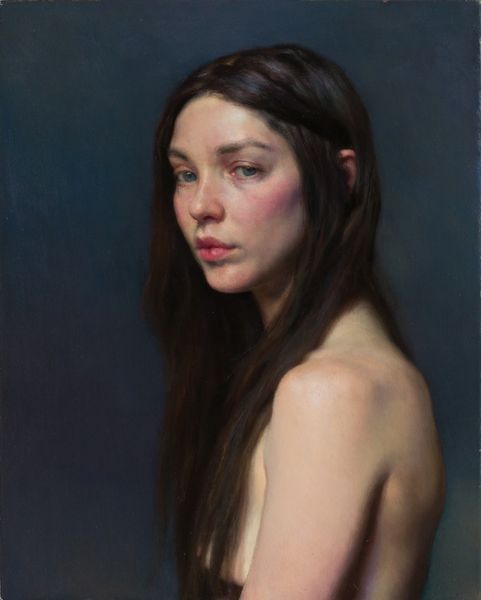
painting
#
portrait
#
figurative
#
contemporary
#
portrait
#
painting
#
figuration
#
portrait reference
#
portrait head and shoulder
#
animal drawing portrait
#
portrait drawing
#
facial study
#
facial portrait
#
portrait art
#
fine art portrait
#
realism
#
digital portrait
Copyright: Modern Artists: Artvee
Curator: Aaron Nagel’s "The Suffering I" created in 2014, immediately arrests my attention with its melancholic mood. The subject’s downward gaze evokes a sense of internal struggle. What is your initial response to this portrait? Editor: It’s visceral. The muted palette combined with the suggestion of dirt smeared across her chest and neck implies a history of adversity and resilience. It speaks to the exhaustion etched onto so many female-presenting bodies forced to navigate oppressive social structures. Curator: Precisely. The title itself "The Suffering I", rendered with roman numerals just above the head of the subject, hints at both personal torment and potentially a series of related works, archetypes even. The portrait’s realism amplifies its emotional resonance, urging us to contemplate the universal experience of pain. Editor: And what’s significant to me is the absence of context, this minimalist aesthetic directs us to look intensely at her experience. We are pushed to ask: is this societal, personal, or is the distinction even valid? There’s a potent dialogue between beauty and suffering here. Curator: It makes me think about the archetype of the suffering mother, visible in religious paintings for centuries. Consider the Mater Dolorosa and her unwavering face, enduring but full of sorrow. Editor: It's as if Nagel wants us to think of historical precedents while critiquing current socio-political inequalities. What stories, erased or yet to be acknowledged, do her features, darkened and vulnerable, reflect? Curator: Indeed. Through subtle choices like the way her eyes are cast down or that smudge across her face, the artwork achieves a captivating blend of individual pain and something greater. Editor: Right, this painting leaves one contemplative regarding collective resilience when grappling with immense adversity. Curator: Thank you. This conversation allowed us to examine how visual arts might evoke themes about grief, survival, and solidarity. Editor: It highlights the urgent need for intersectional interpretations when discussing visual texts of our contemporary era.
Comments
No comments
Be the first to comment and join the conversation on the ultimate creative platform.
